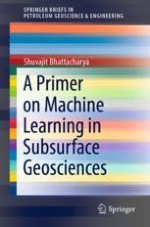2021 | OriginalPaper | Buchkapitel
5. Summarized Applications of Machine Learning in Subsurface Geosciences
verfasst von : Shuvajit Bhattacharya
Erschienen in: A Primer on Machine Learning in Subsurface Geosciences
Aktivieren Sie unsere intelligente Suche, um passende Fachinhalte oder Patente zu finden.
Wählen Sie Textabschnitte aus um mit Künstlicher Intelligenz passenden Patente zu finden. powered by
Markieren Sie Textabschnitte, um KI-gestützt weitere passende Inhalte zu finden. powered by
